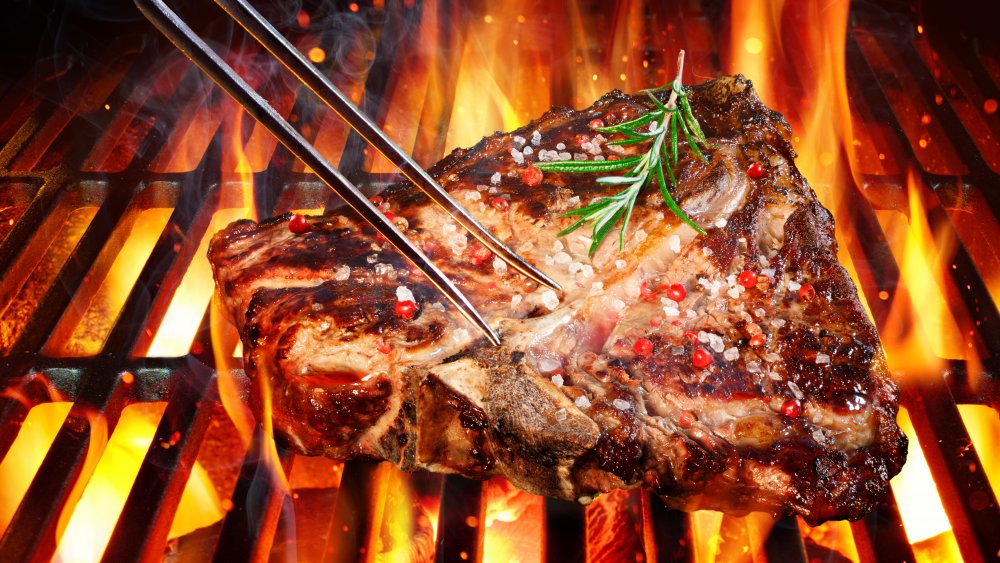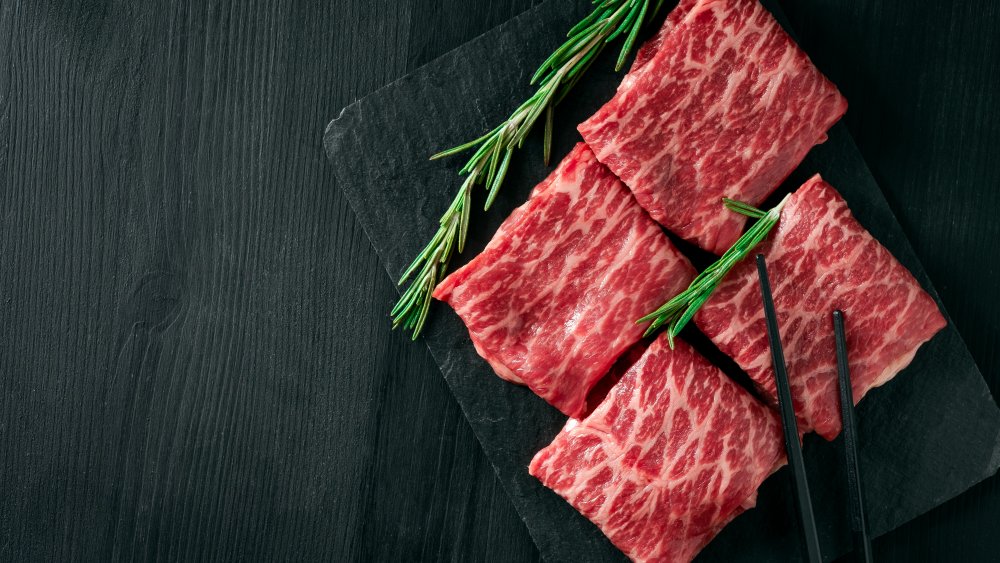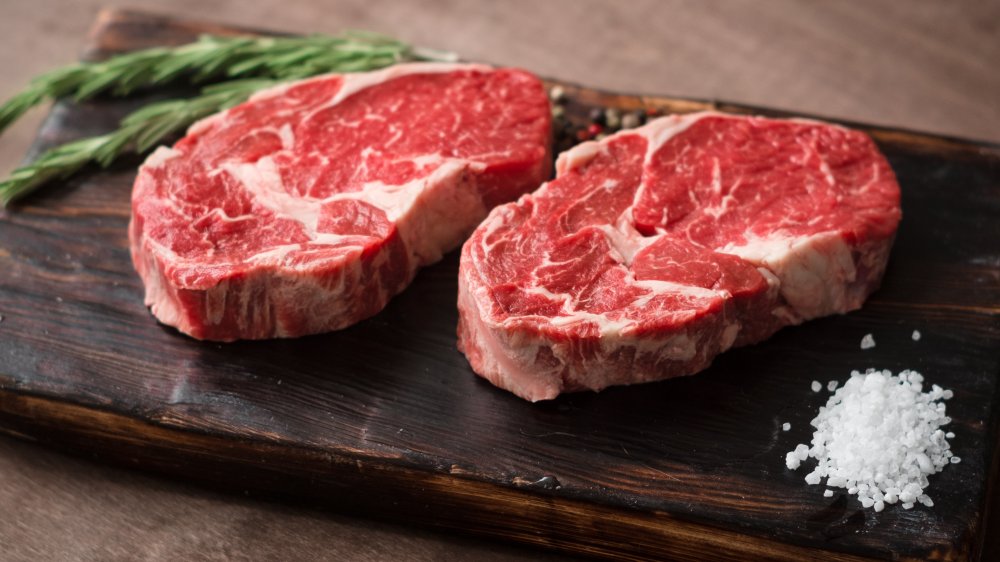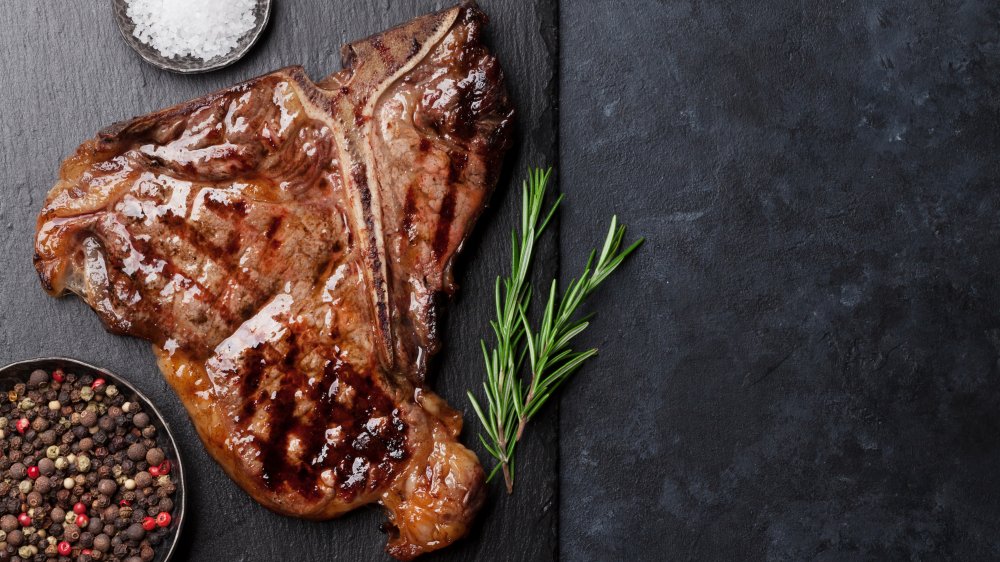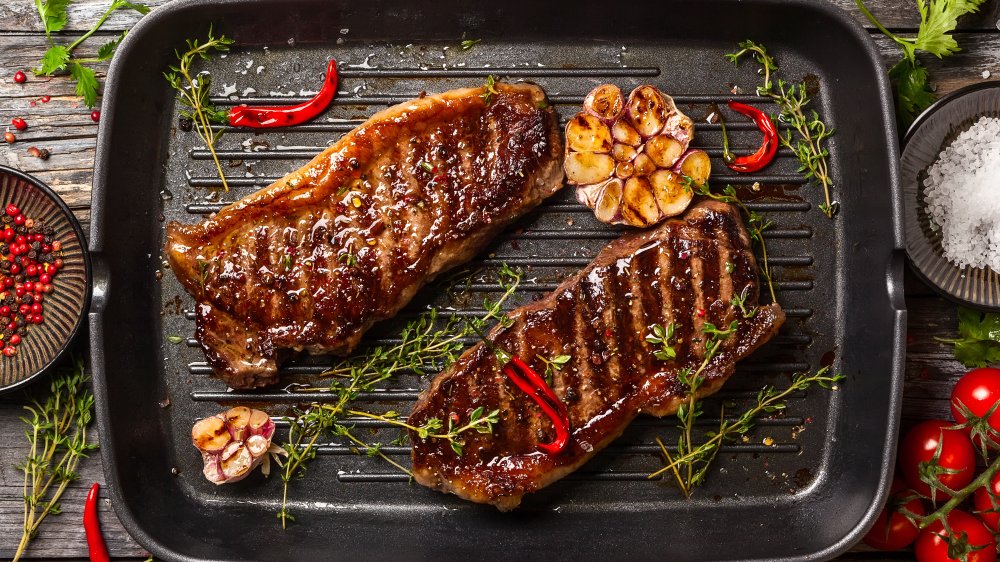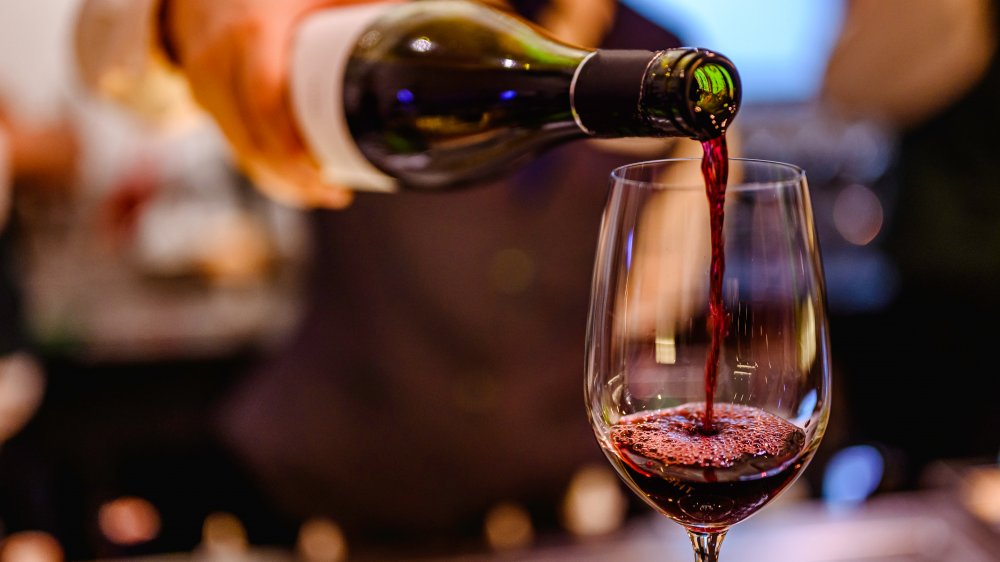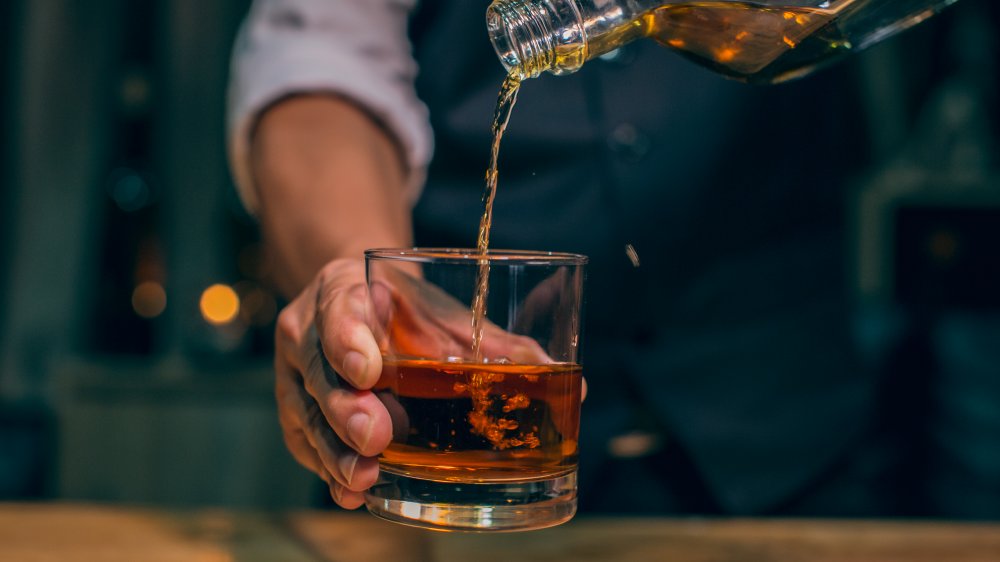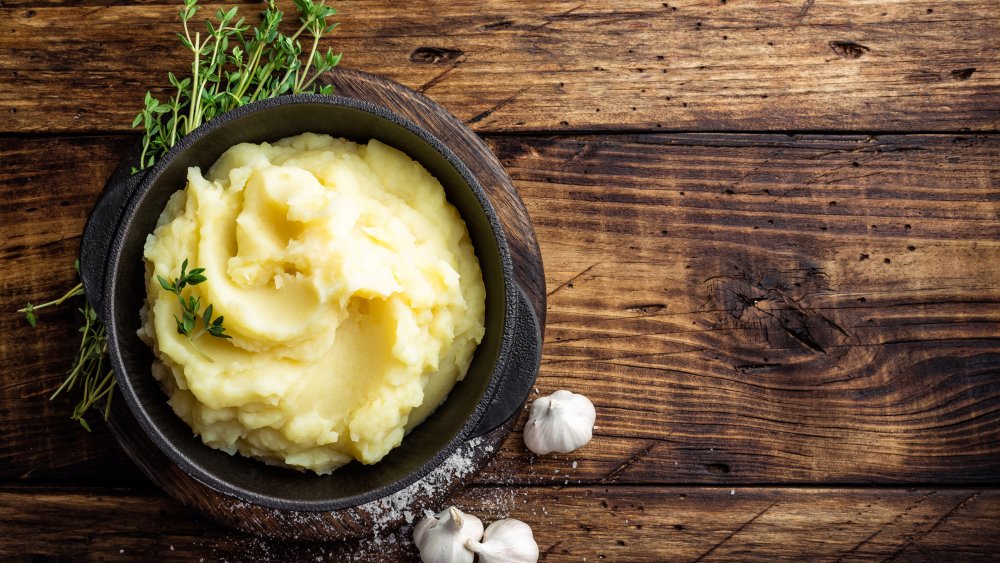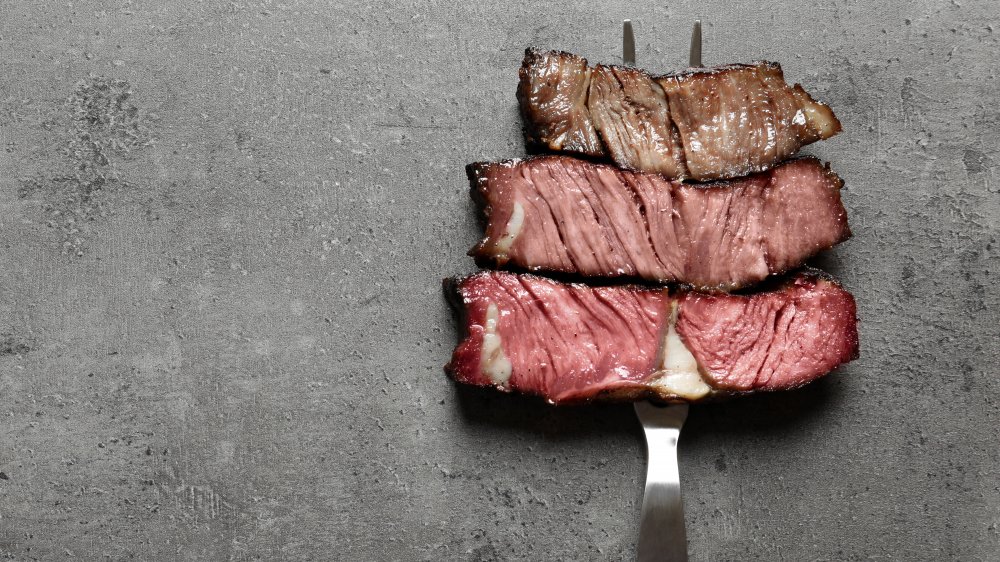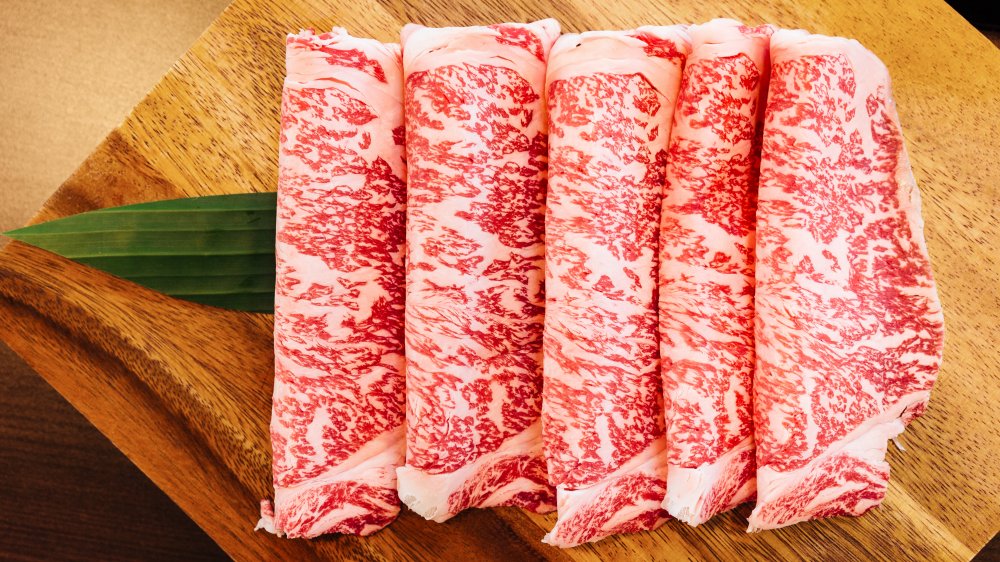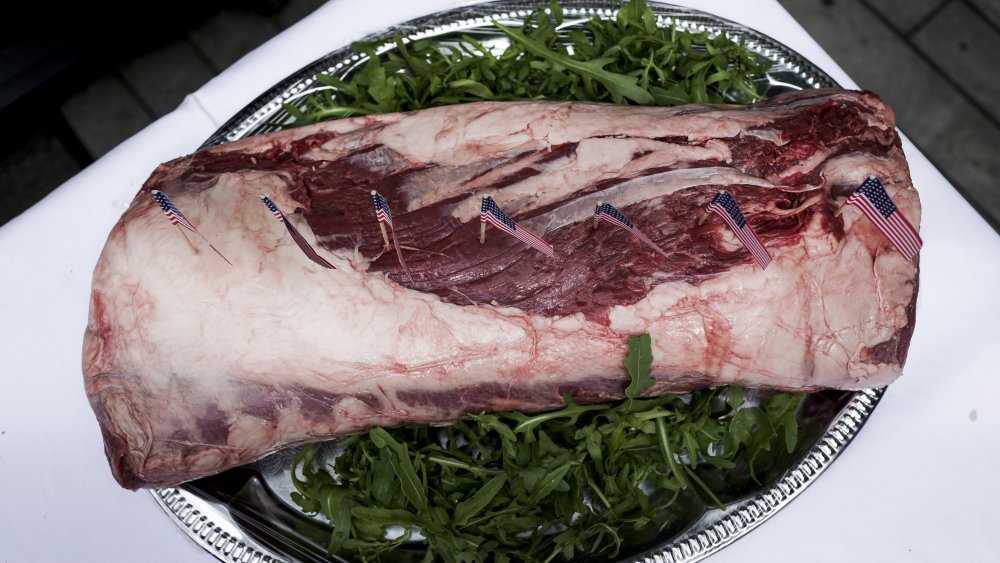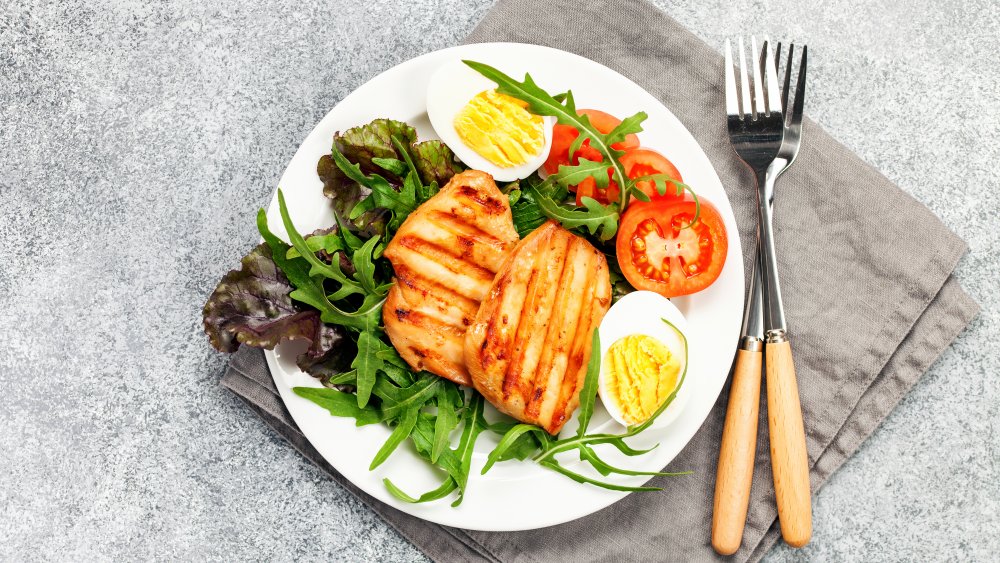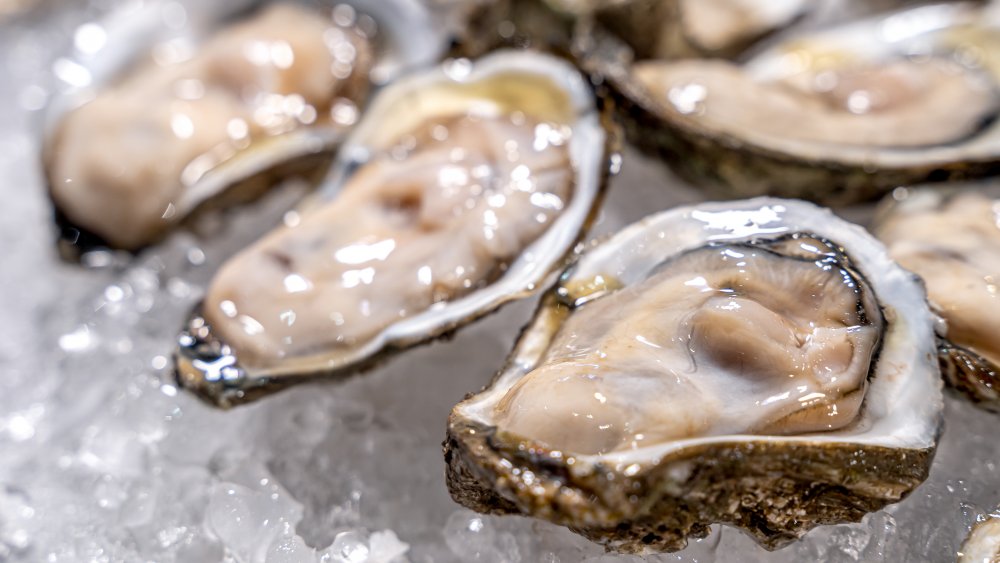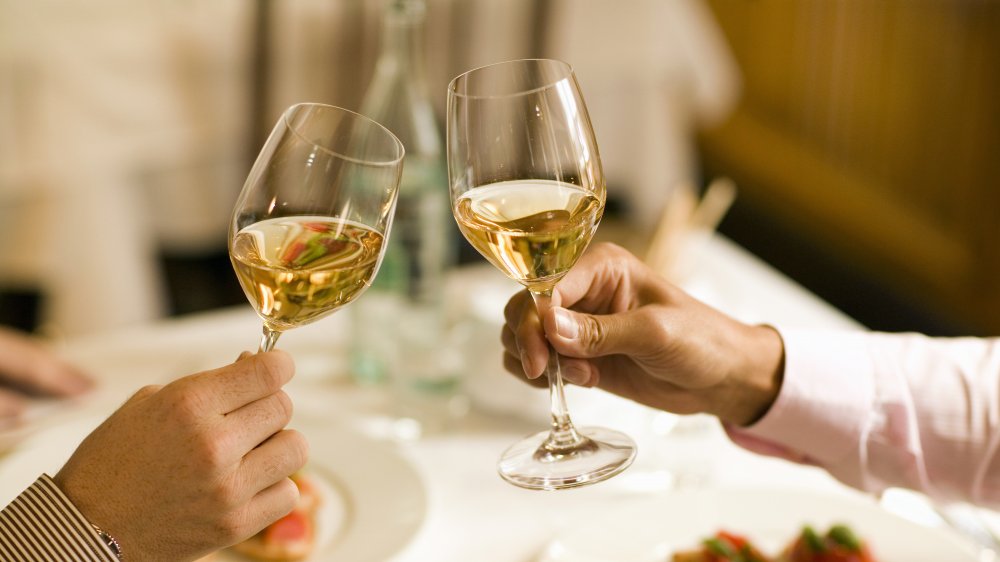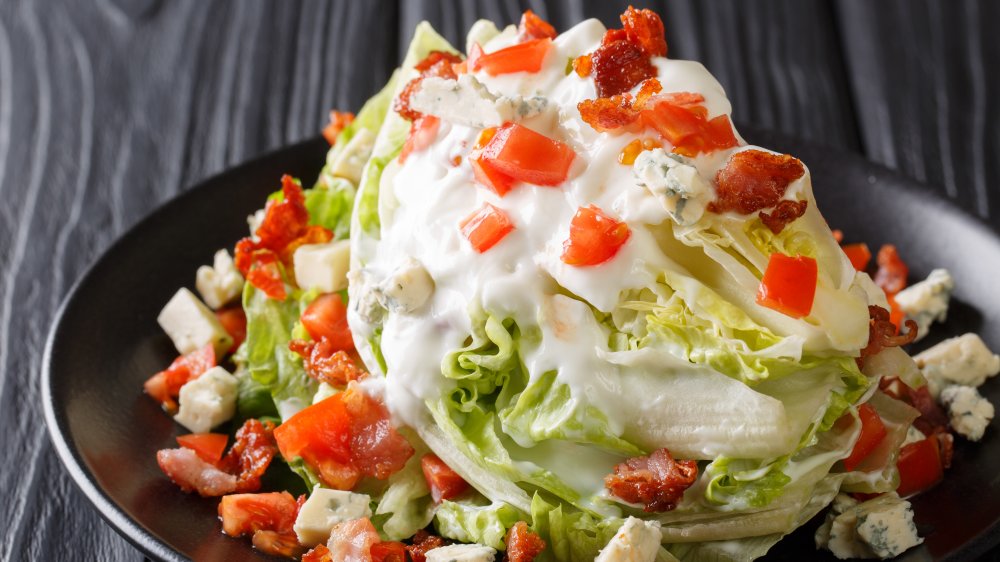7 Things To Order At A Steakhouse And 7 Things To Skip
When you want to go out somewhere special to eat, you have a few options open to you. However, some choices stand above the rest. There are few culinary experiences that can match a trip to a great steakhouse. While other food fads have come and gone, the steakhouse has stood steady decade after decade. After all, who doesn't love a rich, juicy steak? There's a simplicity to what a chophouse does that will never go out of style: excellent food cooked in an excellent manner. Add a great atmosphere to the mix, and it makes sense why this kind of restaurant has stood the test of time.
It's hard to go too wrong when it comes to ordering at a steakhouse. But make no mistake, whether it's the lackluster flavor or a pure rip-off, all menu items are not created equal. These are a few of the things you should order at a steakhouse and a few more that you should skip.
Do order Wagyu at a steakhouse
A trip to a steakhouse is a luxury experience and, if possible, you should order accordingly. There won't be anything on the menu more luxurious than Wagyu beef. Wagyu is a Japanese beef cattle breed known for the marbling, or fat, within the meat itself. Most pieces of steak will have most of the fat surrounding it. Wagyu is unique in that it has these streaks of fat within the tissue. This gives the steak an unrivaled level of flavor, richness, and tenderness.
Not only is it tastier than other breeds of cattle, Wagyu beef is healthier as well. According to the American Wagyu Association, Wagyu has a higher ratio of healthy to unhealthy fat than other beef and has a minimal impact in raising cholesterol levels.
The one downside is that all these great qualities come with a sizeable price tag. Any cut of Wagyu beef will likely be the most expensive item on the menu. Don't be surprised to see it cost up to and well past $100 for a twelve-ounce steak.
Do order a rib eye from a steakhouse
As the name implies, rib eye steaks come from the rib cage of the animal. They're often cut with the rib bone attached and hold on to a lot of the fat from the bone. The fat in the steak breaks down during the cooking process to both tenderize the meat and give it flavor. The high fat level in a rib eye makes it one of the most flavorful steak cuts you'll find at a steakhouse.
One important factor to consider when ordering a rib eye is how it is prepared. This cut of meat is often best cooked by pan searing. Because of its high fat content, rib eyes are prone to flare-ups that can occur on the grill. The grill's high heat can also quickly dry out the meat. Cooking it in a pan is a slower process that gives the fat time to break down and tenderize the meat, creating a mouth-watering steak.
Do order a T-bone from a steakhouse
There may be no more iconic or recognizable cut of meat at your favorite steakhouse than the T-bone. That's for good cause as it's one of the best cuts around. We've all been to restaurants where we face the dilemma of choosing between two equally appetizing options. This is where the beauty of the T-bone steak comes in: It's actually two steaks in one.
The T-bone is cut from the short loin, below the backbone. This area produces some of the most tender cuts of steak. The short loin can be broken down into two steaks, a New York Strip and filet mignon. But with a T-bone, these two pieces are kept together, separated by the eponymous bone.
Both the New York strip and filet mignon are cut from the center portion of the cow, meaning that they're more tender. The strip side has a strong, beefy flavor while the filet is milder. The bone helps insulate the meat while it's being cooked, allowing the steak to retain moisture and juiciness.
Do order a bone-in New York strip from a steakhouse
If you're not up for the whole T-bone, stick with the New York strip steak. You may hear it called by many other names, including strip steak, Kansas City strip, or club steak. Whatever the term, you're guaranteed a delicious, bold, beefy piece of meat.
You'll most often see a New York strip served boneless, but you may have the option to leave the bone in. In this case, when the two cuts of the T-bone are separated, the middle bone is kept attached to the strip.
The bone helps insulate the beef while it cooks, allowing it to retain moisture and turn into a mouthwateringly juicy steak. But it's best to wait to visit a steakhouse to try this style of cut rather than throwing one on the backyard grill. Bone-in steaks are much harder to cook than boneless ones. The portion of the steak closer to the bone cooks slower than the rest of the meat. This makes the steak difficult to heat to the proper doneness. It's best left up to the professionals.
Do order Cabernet Sauvignon from a steakhouse
The adage "red wine with red meat, white wine with fish" didn't just evolve from personal preference or adherence to the color spectrum. There's a science to why these two pair so well together.
Red wine is generally is higher in tannins, chemicals found in grape skin. Tannins have a rather bitter taste. However, they work as perfect complements to both protein and fat (two things steak has plenty of). Tannin molecules soften the fat found in steak, making it more tender and flavorful. The more tannin absorbed by the steak, the less that's in the wine. Less tannin reduces astringency of the wine, making it taste smoother and less bitter.
But which red to choose the next time you're at a steakhouse?
Cabernet Sauvignon is always a good choice for pairing with steak. First and foremost, it has a high level of tannin. It also has a high alcohol content, which will help cut through the meat's fat. And the Cabernet Sauvignon's bold flavors won't be washed away by the powerful flavors of the steak. You'll enjoy the taste of both your steak and wine.
Do order a whiskey from a steakhouse
Not a wine drinker? Fear not. There are plenty of other beverages that pair well with steak that you can order from a steakhouse. The trick is finding one whose flavors won't be overpowered by those of the meat. The rich, caramel notes of whiskey fit the bill. Great whiskeys have a smoothness and heartiness that, just like red wine, can bring out the best qualities of the steak while adding some delectable flavors of their own.
Choosing which whiskey pairs best with your steak may be your biggest dilemma. A lot depends on the cut of the steak, how it's prepared, and what other flavors are involved (sauces, marinades, etc.). For example, bourbon and rye are popular options. But Scotch is often the whiskey choice for grilled steak, as the spirit's smoky flavor complements the flavor from the grill.
Whichever you choose, have your whiskey neat, on the rocks, or in a simple cocktail, such as an Old Fashioned. This will ensure the true tastes of the whiskey comes through and other flavors don't overpower the meal.
Do order potatoes from a steakhouse
Baked, roasted, fried, scalloped, the best thing about potatoes (aside from their taste) is their versatility. That's what makes potatoes such a great side dish. Choose a preparation style that complements your entrée and you'll have yourself a perfect pairing.
When it comes to steak, consider mashed potatoes. Not only is it the ultimate comfort food, it has a creamy texture that goes well with a tender, juicy steak.
And it turns out there may be a much more significant benefit to washing that steak down with potatoes. Red meat consumption has been shown to increase the risk of colon cancer. However, studies have shown that eating red meat along with starch (like potatoes) can decrease that risk. Researchers compared individuals who ate red meat alone as well as those who ate red meat and starch and found that the starch reversed some of damaging effects of red meat on human cells.
Don't order a well-done steak from a steakhouse
Personal preference aside, ordering a steak well done is a bad idea. Not only will you potentially be subjecting yourself to a very hard eye roll from the waiter and chef, you'll be treating yourself to a significantly inferior meal.
When a steak is overcooked, it loses fat and moisture. The result is a dry, tough piece of meat. New York Magazine restaurant Adam Platt puts it best, saying, "If you have your steak too well done, what are you left with? Where is the alchemy of the tenderness and the crunch and the salt and the sear and the umami? You're just left with a hunk of beef which is burnt and which you put flavorings on. What's the point of it?"
If you're eating at a steakhouse, you're dealing with the highest quality steak cuts. They have been expertly cared for each step of the procurement process and have a price tag that proves it. But when you overcook a steak, it loses all the flavor that makes it worth the cost. Would you really take an expensive steak and whittle it down to the point it winds up tasting like the grocery store steak you can cook at home? You might as well throw your money down the drain.
The ideal doneness for a steak is generally considered medium-rare. At this point, the meat is still tender and the fat has marbled to create a buttery, rich flavor.
Don't order Kobe beef from a steakhouse
If you can get your hands (or forks) on Kobe beef, by all means, go for it. But that's going to be a taller task than you might imagine.
Kobe beef is the meat that comes from one specific breed of the four breeds of Wagyu cattle, known as Kuroge Washu. But outside of Japan, "Kobe beef" has come to be known as any type of Wagyu beef. That might seem like an insignificant detail, but this breed has a unique genetic makeup creating unrivaled marbling. In other words, even in the elite class of Wagyu beef, Kobe sits head and shoulders above the rest.
So why is the piece of meat at your favorite steakhouse not the Kobe beef the menu says it is? In order for it to be true Kobe beef, it needs to come from a cow raised in a particular area in Japan in addition to meeting many other criteria. And for good reason. The environment, methods, and expertise required to properly produce this high-quality meat can only be found in Japan.
Because of its rarity, Kobe beef is hard to find in America. According to Business Insider, in 2016, there were just eight restaurants in the country that served the real thing. If you order a faux Kobe beef steak, you'll probably still end up with a pretty good meal, but you certainly won't be getting what you paid for.
Don't order a tenderloin from a steakhouse
There are so many amazing cuts of meat on the menu of an average steakhouse. With so many options available to you, it's easy to pick wisely. But one cut you're probably going to want to avoid is the tenderloin.
Granted, the tenderloin is one of the most tender cuts of beef available. It's cut from the short loin portion of the cow. Because this area of the cow is not weight-bearing, there's little connective tissue to toughen up the muscle. That makes it super soft, which is definitely a selling point.
But texture isn't everything. And what the tenderloin makes up in tenderness, it lacks in flavor. The problem is that this cut is very lean. The absence of fat means the tenderloin will have, at best, a mild flavor. You'll be dependent on a good, heavy sauce to bring life to the dish, at which point, you'll be wondering why you paid so much for a steak in the first place.
Don't order chicken at a steakhouse
There's a strong argument to be made for never ordering chicken at a restaurant. It's far less flavorful than many other types of meat. And if you order your chicken dish from a steak house, there's a good chance it'll be overpriced. If you think you're going with the healthier choice by opting for poultry, think again. Chicken portions served in restaurants are often larger than those of red meat. This eats into whatever calories you saved by eating a leaner (and less delicious) protein.
You may disagree with this line of thinking. But ordering chicken at a steakhouse is surely something to think twice about. No matter how appetizing the dish sounds, chicken is always going to be an afterthought on a steakhouse menu. Not only are you settling for an inferior product, you're missing out on what the establishment does best.
Chicken is an extremely common meal. Why waste a trip to the steakhouse on it? Instead, fully enjoy the experience with expertly cooked piece of steak — something you assuredly can't find on every corner.
Don't order raw oysters at a steakhouse
Raw oysters are mainstay on steakhouse menus, and though they may be delectable appetizers, you should think twice before ordering them. Oysters are a breeding ground for bacteria called Vibrio. Most vibrio infections cause mild stomach illness, but severe cases can lead to bloodstream infections, severe blistering, and even death.
All the myths you've heard about how to avoid tainted oysters — "you can tell a good oyster from a bad one," "alcohol kills harmful bacteria," "just a few oysters can't hurt you," "only eat oysters harvested in months with the letter 'R'" — are false.
Bacteria aside, oysters can also go bad just like any other perishable item. Although you can technically keep oysters in your fridge for up to five days if they're stored properly, they should be eaten within a few days of being harvested, ideally within 24 hours if you want the best flavor. So if you don't live near a body of water, you should probably stick to the wedge salad.
Don't order some white wines from a steakhouse
The aforementioned "red wine with red meat, white wine with fish" adage is a good guiding principle to food and wine pairings, but it's not completely accurate. Generally, the characteristics of red wine and beef complement each other particularly well. But whites can certainly work too — you'll just need to be more particular when you're ordering at a steakhouse.
Most wine whites will have a subtle flavor that will be washed out by the steak. You'll be paying for a glass of wine that you can't even taste. But if you are going to indulge in a glass of white, the goal will be to find a full-bodied one that mimics the flavors of a red. Chardonnay, Riesling, and champagne are all good choices. A white wine would work best with a leaner cut of meat and one that's simply prepared without a heavy sauce. Not every kind of white wine is going to pair well with a steak, though, so you'll be wise to avoid those that are too light and lacking in flavor. Remember, the bolder the flavors of the food, the less likely the wine will be able to keep up.
Don't order a salad from a steakhouse
If you're a voracious carnivore heading to a steakhouse, you're probably shooting past the salad section on the menu. And for good reason.
Salads are known to be some of the most overpriced items on any restaurant menu. The ingredients in most salads cost just a few dollars, but an upscale steakhouse can charge north of $15.
If you think you're cutting calories by opting for greens, think again. Restaurant salads are often drenched in high-calorie dressings and covered in unhealthy toppings like bacon bits and cheese.
Produce also happens to be a hotbed of contamination. According to a 2015 CDC estimate, nearly half of all food-borne illnesses are caused by produce. Meat and poultry caused only 22 percent, fish and shellfish just 6 percent.
One of the most popular salad offerings on a steakhouse menu is the wedge salad, an item that epitomizes the problems of this category. You're paying $15 for what is essentially just a chunk of lettuce, which is known to carry bacteria such as E. coli and salmonella, and covered in bacon and blue cheese.
